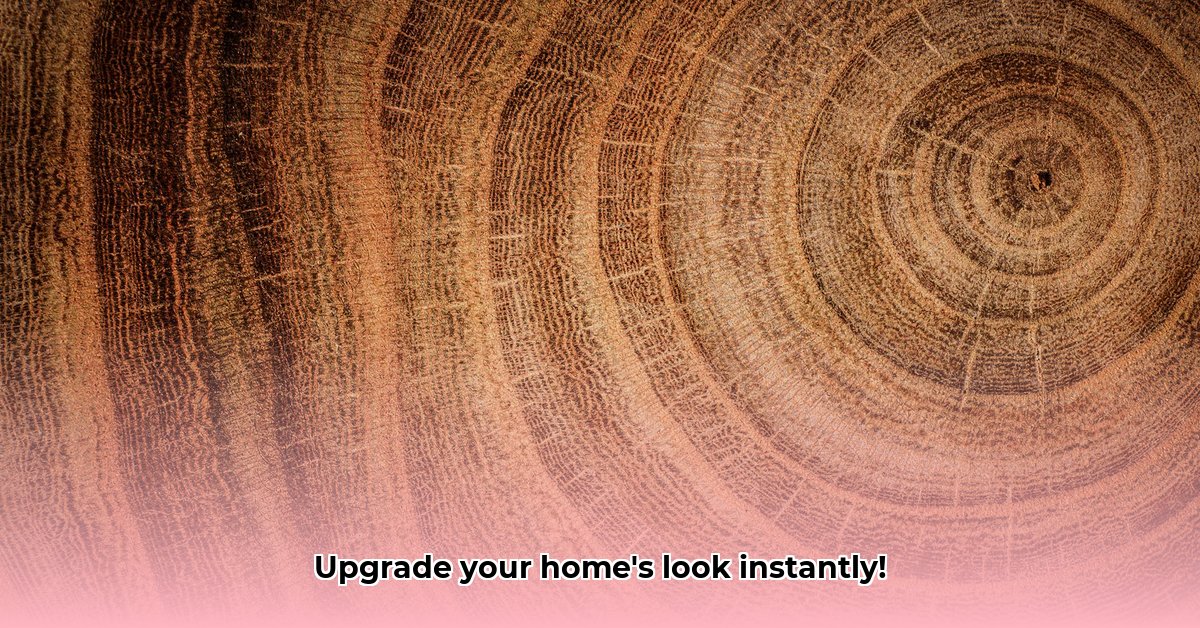Want to give your home a quick, stylish upgrade that’s surprisingly easy? Forget boring plastic outlet covers! This guide shows you how to install beautiful wood ones. We’ll walk you through choosing the right covers, installing them perfectly, and even give you tips to keep them looking great. Whether you’re a DIY pro or just starting out, you’ll be amazed at how much a small change like this can boost your home’s look, adding aesthetic appeal with wooden craftsmanship. Let’s get started and add some warmth and character to your rooms!
Wood Outlet Covers: Upgrade Your Home’s Look and Feel
Tidy up your space with modern elegance
Tired of those plain, boring plastic outlet covers? Ready for a simple home improvement project that packs a big style punch, giving your home a unique aesthetic? Then get ready to discover the charm and ease of installing wood outlet covers! They’re a surprisingly simple way to add warmth, personality, and a touch of elegance to any room in your house. Let’s explore how to transform your home, one outlet at a time.
Choosing Your Perfect Wood Outlet Covers
The beauty of wood outlet covers lies in their versatility. You’ll find a stunning array of options at your fingertips, from the rich, deep tones of cherry wood to the lighter, brighter look of oak. Do you dream of a sleek, modern aesthetic or a more rustic, farmhouse feel? The choice is yours! Your existing décor will likely guide your selection; you want the new covers to complement, not clash. Consider these options for achieving harmony with your existing interior design:
- Finished Covers: These are ready-to-install and come with a pre-applied finish, meaning instant gratification and stunning style with easy upgrades. They’re perfect if you’re short on time or DIY experience, providing both style and convenience. Many retailers offer pre-finished covers in popular wood species like maple, walnut, and cherry.
- Unfinished Covers: These offer maximum customization, perfect for crafting a personal aesthetic. You can stain or paint them to perfectly match your walls, furniture, or even create a bold contrast for a truly unique look, tailored to individual expression. This path requires a bit more effort, but the possibilities are endless! Customization enables unique personalization and is a gateway to creativity. Consider using milk paint for a vintage look or experimenting with wood-burning techniques for a personalized design.
Easy Installation: A Step-by-Step Guide
Installing wood outlet covers is a breeze, even for beginners. With just a few simple steps, you can achieve a professional-looking finish and upgrade your home interior. But remember, safety first!
Step 1: Power Down! Before you even touch the outlet, turn off the power at your breaker box (electrical panel). This crucial step prevents electrical shock and keeps you safe. Use a non-contact voltage tester to confirm the power is off before proceeding.
Step 2: Remove the Old Cover: Carefully unscrew your existing outlet cover and gently remove it. Set it aside for now. Store the screws in a safe place; you may need them later if the new screws don’t fit.
Step 3: Outlet Inspection: Take a quick look at the wiring. If you see any frayed wires, loose connections, or anything that looks even slightly off, it’s best to call a qualified electrician (licensed professional). Don’t risk a potential fire hazard. Look for any signs of damage to the outlet itself, such as cracks or discoloration.
Step 4: Attach the New Cover: Align your beautiful new wood outlet cover with the outlet box. Then, carefully secure it using the screws provided. Make sure it’s snug and firmly in place. Avoid over-tightening, which could crack the wood.
Step 5: Power Back On: Once you’re certain the cover is secure, flip the power back on at the breaker box.
Step 6: Admire Your Work: Step back and admire your transformation! You’ve just added a touch of class and sophistication to your home interior. Consider taking a “before and after” photo to share on social media!
Weighing the Pros and Cons
Like any home improvement project, wood outlet covers have their advantages and disadvantages. Let’s weigh them up:
| Pros | Cons |
|---|---|
| Significantly enhances the aesthetic appeal | Might be more expensive than plastic alternatives |
| Offers a wide variety of wood types and finishes | Possibly more sensitive to moisture; needs protection |
| Easy DIY installation; no special skills needed | Unfinished covers require additional finishing work |
| Adds warmth and character to any room | May not be compatible with all outlet types |
Maintaining Your Wooden Masterpieces
To ensure your wood outlet covers remain beautiful for years to come, a little regular care goes a long way. Dust them gently with a soft, dry cloth. Avoid harsh chemical cleaners; a damp cloth with mild soap is usually sufficient for tougher stains. If your home is particularly humid, consider applying a wood sealant annually, especially to unfinished wood covers, to safeguard against moisture damage and warping, thus ensuring long-lasting quality. For high-traffic areas, consider using a furniture polish specifically designed for wood.
Beyond the Basics: Express Your Personal Style
Wood outlet covers are more than just functional; they’re an opportunity to express your personal style, offering unique customization options. Consider the overall mood you want to create. Darker woods, such as walnut or mahogany, can lend a sophisticated and elegant ambiance to a room. Lighter woods, like maple or ash, could create a brighter, airier feeling. The wood grain itself is another design element to consider. Some woods boast dramatic, swirling grains, while others feature a more understated, linear pattern. Experiment and have fun! Remember, it’s a small detail that can make a big impression. And if you choose unfinished wood, the personalization options are limitless! Enjoy the process! You can even coordinate your outlet covers with other wooden accents in your home, such as picture frames or furniture legs.
How to Install Unfinished Wood Outlet Covers and Finish Them Myself
Personalize with custom woodwork
Key Takeaways:
- Upgrading your home’s aesthetics with custom wood outlet covers is easier than you think.
- DIY offers significant cost savings and unparalleled personalization for those seeking budget-friendly customization.
- Choosing the right wood and finish is crucial for both look and longevity, ensuring durable style.
- Safety is paramount; always prioritize electrical code compliance.
- With careful planning and execution, you can achieve professional-looking results, adding skill to your repertoire.
Choosing Your Wood and Supplies
First, select your wood. Hardwoods like oak or maple offer durability and a beautiful grain, but softer woods like pine are easier to work with for beginners, ensuring a good starting point. Consider the existing style of your room when making your selection. Do you want a sleek, modern look, or something more rustic and traditional? Your choice of wood heavily influences the final aesthetic. Consider using reclaimed wood for a sustainable and unique touch.
Next, gather your supplies. You’ll need the unfinished wood covers (consider pre-cut veneer kits for simpler projects for simpler projects), sandpaper (various grits), wood stain or paint (choose a finish that complements your décor), a sealant (to protect the wood), measuring tape, a pencil, a saw (or a jigsaw for intricate cuts), safety glasses, and a well-ventilated workspace. Having everything organized beforehand saves time and frustration, enabling efficiency. Consider using a tack cloth to remove dust particles before finishing.
Preparing the Wood Outlet Covers
This is where how to install unfinished wood outlet covers and finish them myself gets interesting. Begin by carefully measuring your existing outlet boxes. Accurate measurements are vital for a perfect fit and enhancing the final look. Pre-cut veneer kits remove this step, simplifying the process dramatically, making the process more approachable for beginners. If you’re cutting your own wood, carefully transfer those measurements to your chosen wood. Use a fine-toothed saw for clean cuts; a jigsaw offers greater control for intricate shapes. Remember to add a slight margin for sanding and adjustments.
Sand the edges of your cut wood until they are smooth. Start with coarser grit sandpaper (e.g., 120 grit) and gradually move to finer grits (e.g., 220 grit). A smooth surface ensures a professional finish. This sanding process is crucial, regardless of whether you’re using pre-cut pieces or cutting your own, thus ensuring the best outcome. Consider using a sanding block for consistent pressure on larger surfaces.
Painting and Finishing
Once your wood is perfectly cut and sanded, it’s time to apply your chosen finish. Whether you opt for stain to highlight the wood’s natural beauty or paint for a bolder color choice, this step gives your outlet covers personality. Apply thin, even coats according to the manufacturer’s instructions, allowing each coat to dry completely before applying the next. Several thin coats yield far better results than one thick coat, maximizing quality and protection. Use a high-quality brush or sprayer for even application. Consider using a wood conditioner before staining to ensure even color absorption.
Seal the wood with a high-quality sealant. This protects your hard work from moisture and wear, extending the life of your covers. A clear sealant preserves the natural wood grain, while a tinted sealant offers additional color. Apply multiple thin coats for best results, allowing each coat to dry thoroughly. Consider using a water-based sealant for easier cleanup and lower VOCs.
Installing Your New Wood Outlet Covers
Before you begin this step
- Apps Button on Android Not Working? Fix it Now - November 28, 2025
- Make The Apps Button Work For You On Your Phone - November 27, 2025
- Essential Productivity Apps for Android to Work Smarter - November 26, 2025










